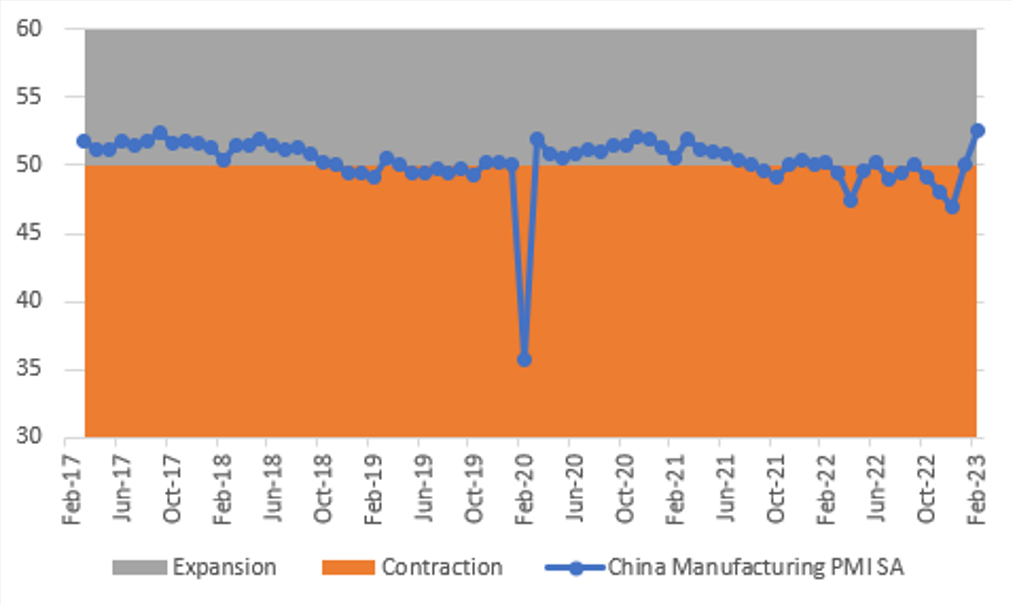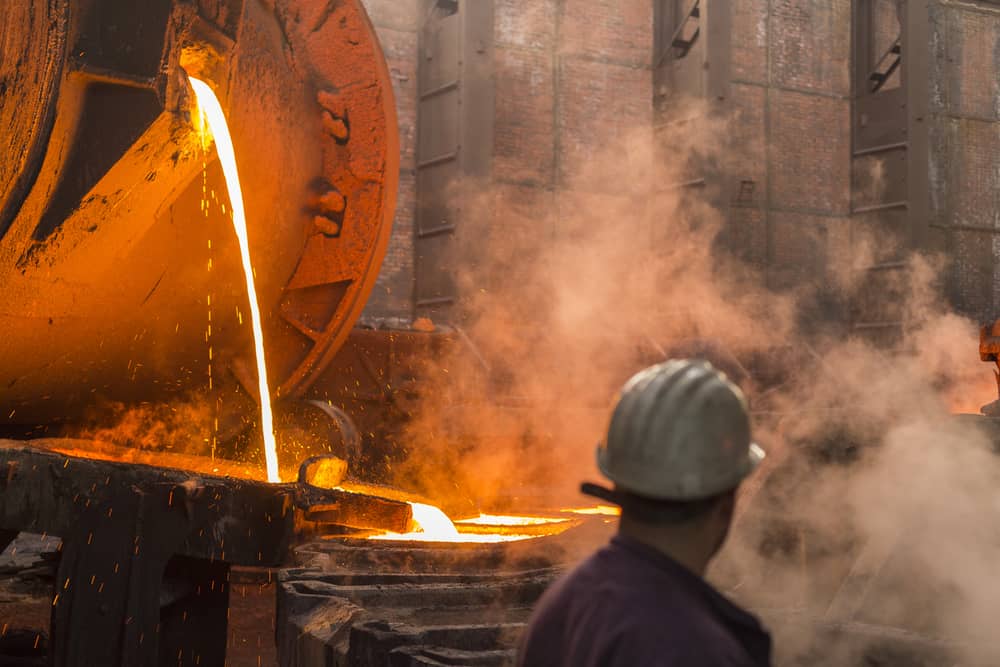Copper exchange-traded products (ETPs) are enjoying an explosive start to the year owing to the convergence of the China reopening demand boost and a continued undersupply of the key base metal.
These factors combined have driven the price of copper up 7.3% so far this year and led a significant spike in investor demand.
Highlighting this, the $1.6bn WisdomTree Copper ETC (COPA) has seen $1.1bn inflows in 2023, as at 8 March, according to data from ETFLogic, while the Global X Copper Miners UCITS ETF (COPX) added $72m over the same period.
On a tactical basis, this bounce has been driven by the end of COVID-19 lockdown restrictions in China, which sparked the fastest recovery in China’s manufacturing purchasing managers’ index (PMI) since 2012, signalling a sudden return to high output goods production.

Source: China Federation of Logistics and Purchasing, Global X
The country’s authorities are also offering renewed support to its ailing property sector, with the China Banking and Insurance Regulatory Commission (CBIRC) outlining 16 steps including lifting the ban on equity refinancing for property developers, allowing them to sell shares for debt repayments and acquisitions, Global X said.
Listed developers will also be permitted to begin private placements to pay off debt, refill working capital, finish housing projects and build affordable housing.
This was capped off with new loan lines totalling $162bn from Chinese banks.
A Global X spokesperson told ETF Stream: “China uses more than half of the world's copper and is the biggest consumer. The question of whether China’s construction industry can recover sufficiently is one of the key questions.
“The building and construction sector accounts for about 30% of total copper end-use and China recently provided a large property sector rescue package.”
Supply side pressure
On the flipside, the chronic undersupply of copper is buoying prices, exacerbated by delays at mines and potential deposit sites.
Some examples in Latin America include protests and roadblocks in Peru preventing the transport of raw materials to and from the Las Bambas copper mine, tax and royalty disputes halting First Quantum’s mining activity in Panama, or a fire at Chile’s Ventanas port disrupting a two million megaton copper export.
“These frequent sources of disruption increase the copper shortage risk in the following years, adding pressure on prices – Chile and Peru alone provide almost 40% of the global copper supply,” Global X added.
“Furthermore, concerns about land acquisition and grid connections stand out in the light of the expected copper supply shortage as potential stumbling blocks to the rapid expansion of capacity.
“A further cause for alarm is the spread of water scarcity in arid places. Typically, a lot of water is needed for the extraction of copper.”
Looking outside of Latin America, copper stocks remain low in the US and Europe, with abrdn recently highlighting the Biden administration’s decision to limit production in the Pebble Mine in Alaska and on 225,000 acres in northern Minnesota.
The former was originally surveyed in 1987 – and remains untouched – despite being the largest known reserve in the US.
Overall, mining giant Glencore predicted last December the world would see a 50 million tonne supply shortage by 2030.
Structural transition based on copper
The likely cause of the long-term deficit is the energy transition from fossil fuels to electric sources relying on copper components, with Bloomberg New Energy Finance predicting more than $10trn of metals could be needed between now and 2050.
Global X noted a recent finding from the International Energy Agency (IEA) that annual copper demand is expected to double by 2030, owing to an expanded renewable power grid and goals such as 50% of all new car sales in the US being electric by the end of the decade.
Speaking to ETF Stream, Nitesh Shah, head of commodities and macroeconomic research at WisdomTree, said: “This is an energy theme. Copper is essentially the underlying for the new energy and copper demand will outpace hydrocarbons at some point – and people are positioning for that in the longer term.”
Shah added clients said they had allocated to products such as COPA with a long-term view of benefitting from the energy transition.
“We believe copper markets will double over the next decade in terms of demand and all of this, minus a few percent, is driven by the energy transition,” he said. “Doubling demand can only be catered to by doubling output. This will not happen with the investment that is going on right now so the price of copper will have to rise.”




